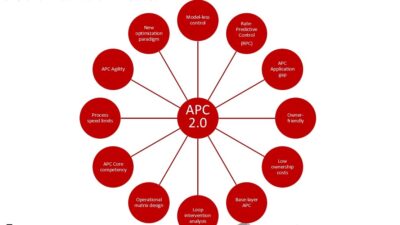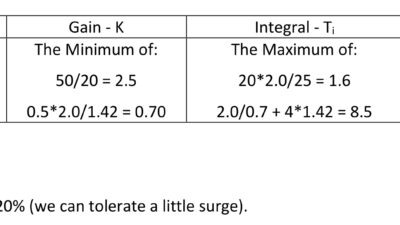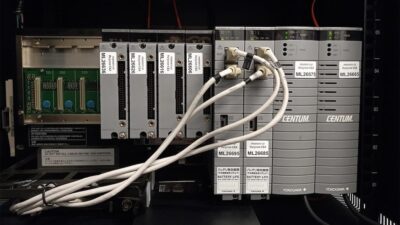Electronic data interchange (EDI)—use of standard formats and communication protocols to exchange business documents such as orders, shipping notices, and invoices among trading partners—was conducted on private communications networks. Today, however, EDI messages often are sent and received over the public Internet.
Electronic data interchange (EDI)—use of standard formats and communication protocols to exchange business documents such as orders, shipping notices, and invoices among trading partners—was conducted on private communications networks. Today, however, EDI messages often are sent and received over the public Internet.
The rationale for this shift is largely economic: Internet-based EDI does not require a separate communications infrastructure. It also can be done without reliance on a value-added network, or VAN, an intermediate company that takes responsibility for ensuring that all EDI messages are formatted properly and reach their intended destinations.
As the trend toward Internet-based EDI has grown, however, companies are discovering this new method of exchanging business documents is not necessarily as easy—or as inexpensive—as they expected.
The reality is that using the Internet doesn’t make things necessarily easier or harder—just different, says Darcy Running, founder and principle of Data Communications Solutions (DCS), an EDI consulting firm based in Eden Prairie, Minn. Essentially, says Running, transitioning to the Internet simply means a company ends up trading one set of challenges for another.
“For example, using XML offers the flexibility for a company to tag data any way it wants, which sounds good,” Darcy explains. “The problem is that customers also can tag data any way they want. So if a company has 50 customers and each does things its own way, the company must now manage 50 data formats.”
The need to deal with such issues caused Link Manufacturing , a Sioux Center, Iowa-based maker of cab suspensions, chassis, and other products for the transportation industry, to turn to DCS for help in designing its new EDI processes. Link Manufacturing had just installed a new ERP system—VISUAL Manufacturing from Infor —and wanted to connect this system to the application that translates and routes its EDI messages, the Gentran package from Sterling Commerce .
Making that connection required a data-mapping exercise that Link Manufacturing did not want to undertake on its own.
“The biggest stumbling block was to find someone familiar with both systems,” says Kevin Kappenman, information systems specialist at Link Manufacturing. “Our programmers can write an EDI map, but having someone come in, sit down, and understand both our business processes and the ERP system was a tremendous help. Since then, the biggest surprise has been how well everything works.”
Link Manufacturing still relies on a VAN— GXS of Gaithersburg, Md.—to transmit EDI messages to and from its customers because it likes having the GXS guarantee that all messages will be delivered properly. But Link Manufacturing now connects to the GXS network over the Internet, and Kappenman says this is a definite upgrade over its previous method of connecting to the VAN: via modem and dial-up connection.
“The Internet is much more reliable than dial-up,” Kappenman says. “Sometimes modems would lock up, and there also would be miscommunications a few times each month that disrupted operations, so we would spend time investigating to determine what happened.”
Move to in-house
While companies like Link Manufacturing believe VANs still offer some value, others are choosing to conduct EDI without that safety net, and the costs that come with it.
Jeff Tanner, IT director for GSC Logistics , says the Oakland, Calif.-based third-party logistics provider dropped its VAN because the costs were “going through the roof.”
“For one thing, the fees were quickly escalating for the character counts because our transaction volume is growing so rapidly,” Tanner says. “We decided to implement our own EDI server and use the Internet for the connection because we needed to eliminate the VAN provider as a middleman.”
GSC Logistics now relies on the Visual Integration Platform from Boomi Software to support all of GSC’s EDI transactions. This platform contains ready-made data maps for the growing number of standards and protocols that Internet-based EDI has spawned. Rick Nucci, CTO and co-founder of Boomi Software , says the platform also is equipped to manage special issues—such as network security and the eventual need to add new trading partners—that companies may not initially think about when considering the move to Internet-based EDI. Finally, the platform offers the ability to design processes for moving data into and out of various business systems using drag-and-drop features that create code-free connections.
When deployed properly, solutions like the Boomi Integration Platform can yield real savings for EDI practitioners.
“EDI’s original premise was to enable machine-to-machine communication that required no human intervention,” says Pat Meisner, CEO of RedTail Solutions , which offers its own Internet-based EDI software and services specifically for small to midsize businesses. “The problem was that while it reduced costs in the supply chain, it pushed the cost of the infrastructure onto the smaller companies. EDI through a VAN requires an investment in infrastructure, data transformation software, and people with special skills to keep it going. There’s a need for many companies to cut those costs, and, instead, implement their own EDI software.”
One choice is to implement an integrated EDI solution, such as those developed by RedTail, which integrate the EDI messaging front end to the accounting and business solutions on the back end. This integration is accomplished through standard templates that RedTail Solutions developed with its business partners. These key capabilities, Meisner says, eliminate the need for companies to incur the costly expense of having this integration built for them, or instead manually entering EDI transactions into their accounting/business system.
Getting to that point, however, can be difficult.
“A growing number of companies have been doing EDI for years, and have outgrown their systems,” Nucci asserts. “They’ve also cobbled together custom code, and now want to combine it all in one product.”
Boomi’s Visual Integration Platform is designed to address that challenge, Nucci says. “In general, once everything is initially set up,” says Nucci, “using Internet-based communication definitely is easier from a maintenance perspective—and there’s no longer a middleman involved. It can be a complex process for companies without the right software tools or expertise, because initially setting up Internet traffic requires knowledge about firewalls and mapping processes.”
Enter integrated maps
Mapping, depending on the company and its software solutions, does pose a significant challenge. The bottom-line value of EDI comes from automating the process of communicating with partners so all inbound and outbound documents are processed without human intervention. Mapping enables this capability.
A consulting firm like DCS can assist with this mapping integration because it has a library of maps created for widely used EDI transaction sets and application software. If it already has the maps, DCS can deliver a turnkey solution. If the map doesn’t exist, DCS staff can create a map to integrate with any flat-file layout, Running says.
The process of creating a map can require several procedures. Typically, DCS may:
Contact trading partners to secure copies of their EDI guidelines;
Analyze the layout of a business application’s flat files to understand the data flow needed by the system to produce/process a flat file, which is necessary to ensure that a proper layout exists to create an ANSI X12, EDIFACT, or XML EDI document;
Create an integrated map based on a trading partner’s EDI guidelines and the application system’s flat file;
Obtain sample data from the trading partner to test the map before implementation.
Install the actual map in the EDI software and arrange to initiate an actual test with the trading partner; and
Provide training in the use of the data map, and also show the user how to set up subsequent trading partners on the system.
To some people, EDI is synonymous with e-business. After all, they reason, data about business transactions is communicated electronically via the Internet, and it then drives ERP or supply chain activities.
Others, such as John Radko, chief technology strategist at GXS, see EDI as a subset of e-business. “It may be the largest portion of e-business, but it’s a subset,” he says.
“EDI and e-business actually overlap, and will play an increasingly vital role together,” Radko adds. “Right now, manufacturers generally have a pull-based supply chain, so EDI is important to document events, such as purchase orders being issued or orders shipped. But demand is growing rapidly for flexible manufacturing, which puts an emphasis on information flow. As companies specialize to cut inventory costs, they’ll substitute information for inventory. EDI and e-business will more often be used together to fuel specific data about [the movement of goods through the supply chain].”
Where we’re headed
Still, just how pervasive EDI becomes will vary from industry to industry. For even some large companies, the use of EDI via the Internet—and EDI in general, for that matter—has not quite taken off as expected.
For instance, Pitney Bowes—a Stamford, Conn.-based company that helps enterprises manage the flow of documents, letters, and packages—is conducting EDI with about 70 key accounts in the U.S., Europe, and Canada. But it’s all still done through a traditional VAN link with GXS.
“There’s definitely been an uptick in the volume of EDI, but it’s still a relatively small percentage of our business,” says Joseph Santamaria, VP of enterprise business applications at Pitney Bowes. “It accounts for around 5 percent of revenue.”
There are two key factors at play here, Santamaria says. The first is that while Pitney Bowes has about one million customers—including such large accounts as Staples and OfficeMax—the vast majority of its customer base consists of small businesses. EDI usage among those small companies is growing, but there just isn’t that much volume yet, he says.
“The other factor for one line of business is that under U.S. Postal Service regulations, we can’t sell postage meters,” Santamaria says. “Instead, customers have to rent or lease them, which requires a signed contract. For large customers, we rely on our direct sales staff to get the customer-signed contract. Small companies can download a contract from our Web site, fill it out, and send it back. But since we need the signed contract, we can’t rely on EDI for those types of sales.”
However, Santamaria does envision EDI becoming more commonplace as customers move to automate processes. He also sees VANs continuing to play a vital role in EDI, particularly as their growing reliance on the Internet as a communications backbone allows VAN operators to lower both their set-up and transaction costs.
“The set-up cost for new customers is extremely inexpensive with GXS,” Santamaria says. “GXS also monitors evolving EDI standards so we don’t have to. For customers interested in EDI, GXS makes it a lot easier to do business with us.”



